Introducing the Alpine attic taking gaming to new heights
Film shows and badminton top the bill in this rebuilt Alpine attic in France’s Haute-Savoie
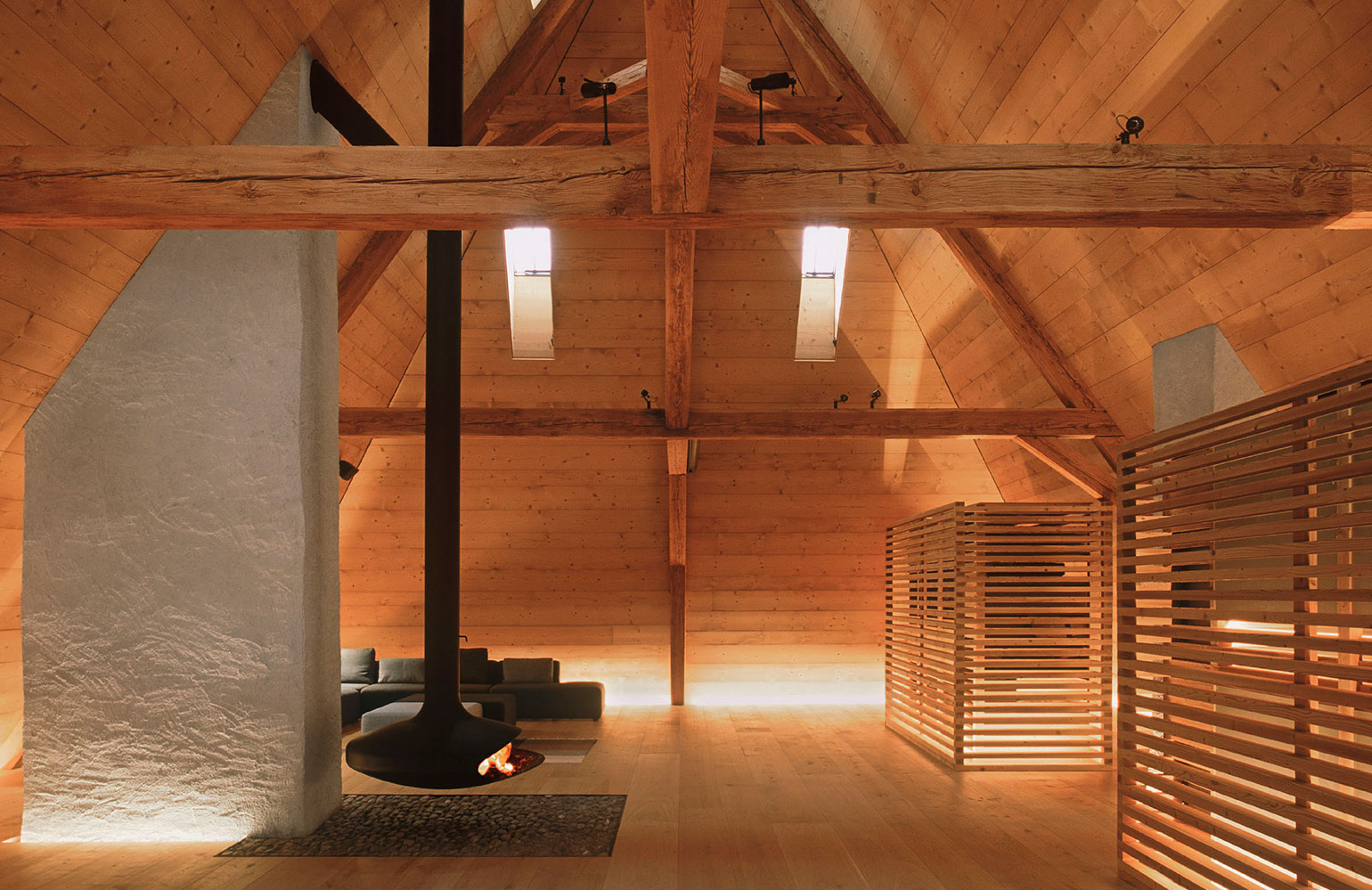
This lofty space is tucked away within the steep roofs of a modest château in France’s Haute-Savoie. Bought by London-based clients as a ski retreat and hiking base, the 17th-century building occupies a prominent spot in a small town centre. The first stage of its renovation is this generous entertaining space, designed by William Smalley, who worked with the owners on a previous project. Future plans include a guest house (also by Smalley) and landscaping by Kim Wilkie.
‘The château is basically a stone box with a roof on top,’ Smalley explains from his London studio, pointing out that the original roof structure, such that remained, was simple and rustic and effectively open to the elements, with unglazed dormer windows. A thorough survey of the patched up and replaced timbers revealed that most were beyond saving and the decision was made to slice the roof off in its entirety and rebuild from scratch.
The clients’ brief called for a multifunctional entertaining space that could not only host teenage slumber parties and impromptu guests, but also cater for dinner parties, film shows, table tennis matches and even small concerts (the town has its own annual arts festival and the clients are keen musical patrons). One key request, Smalley recalls, was that badminton could be played in the 216 sq m space, where the ceiling heights reach up to 8m. ‘It was too good a project not to do,’ he says, explaining that certain aspects of the original space were worth retaining, including the two monolithic chimneys.
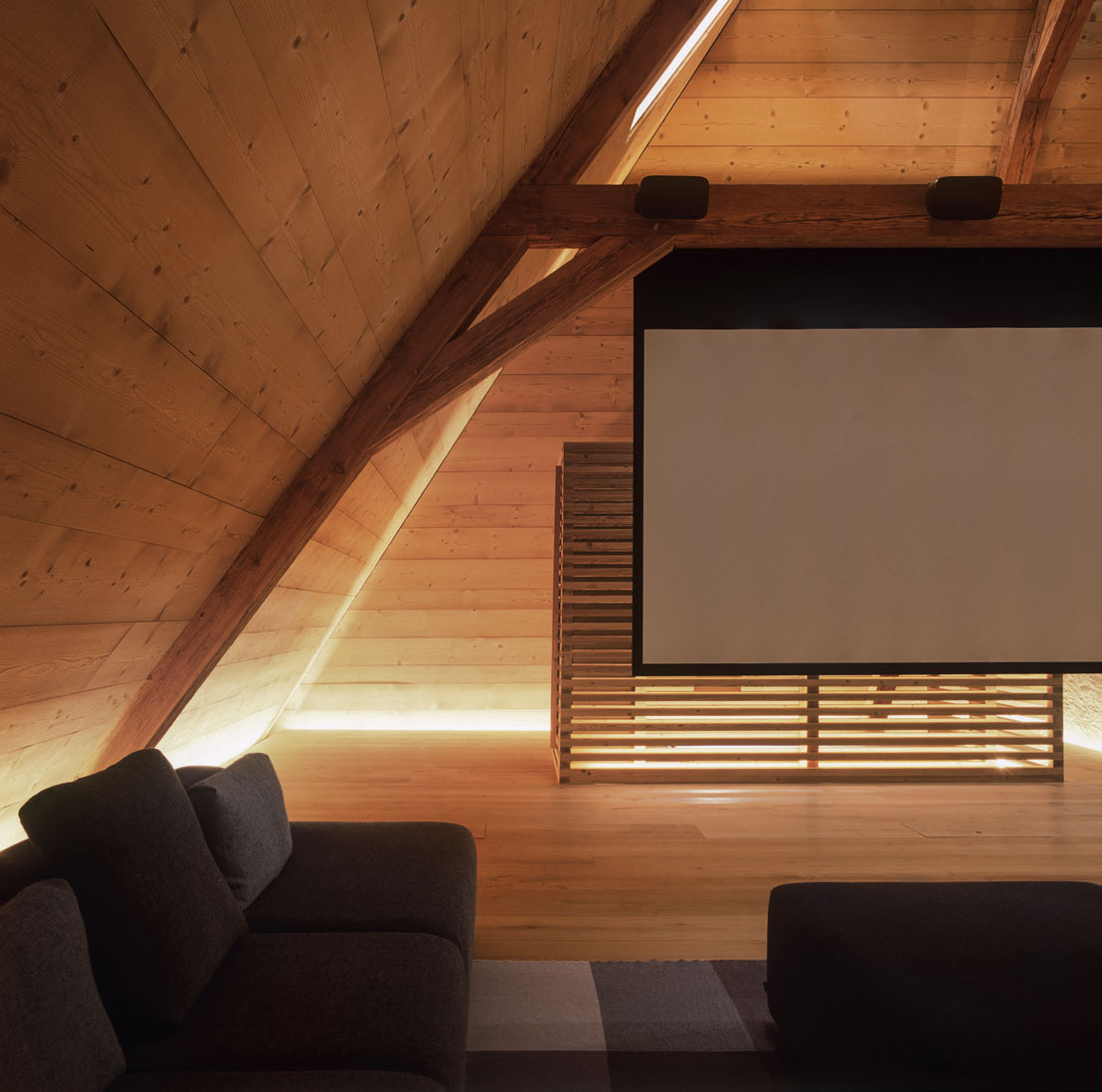
After demolitions, a raft of concrete was added atop the original stone structure and Smalley and his team set about creating a ‘rationalised form of the original roof ’. The new frame and joinery were adeptly handled by a local specialist, Pegorier Charpente, with French larch frame and cladding used throughout above an oak floor. The timbers are lightly baked, cut roughly and brushed to give texture. ‘The frame went up quickly, like a Shaker barn,’ Smalley marvels. ‘It’s a very traditional pegged structure but they used a remote control crane and mountaineering skills to build it.’
The new roof is now heavily insulated and much thicker and weightier than before, although from the exterior there’s no change to the original profile. ‘There’s a degree to which the building belongs to the town,’ says the architect. ‘There was no will or any great need to be radical.’ Inside, the simplicity of the finishes and pared-down material language have maximised the sense of space. Access is via the original stone vaulted staircase, set next to an existing tower that now houses a glass-walled shower. All the cables, pipes and wires are contained within the oak flooring, and the entire space is broken up only by the chimneys and two boxes of slatted timber. One houses the kitchen, the other is a storage space, containing bedding and a set of bespoke bed bases that can be wheeled around the space to create a dormitory. ‘They were informed by the timber stacked up to dry that you see in this valley,’ says Smalley. The bespoke bed bases can also be used as trestles, joining together to form a 20m-long table.
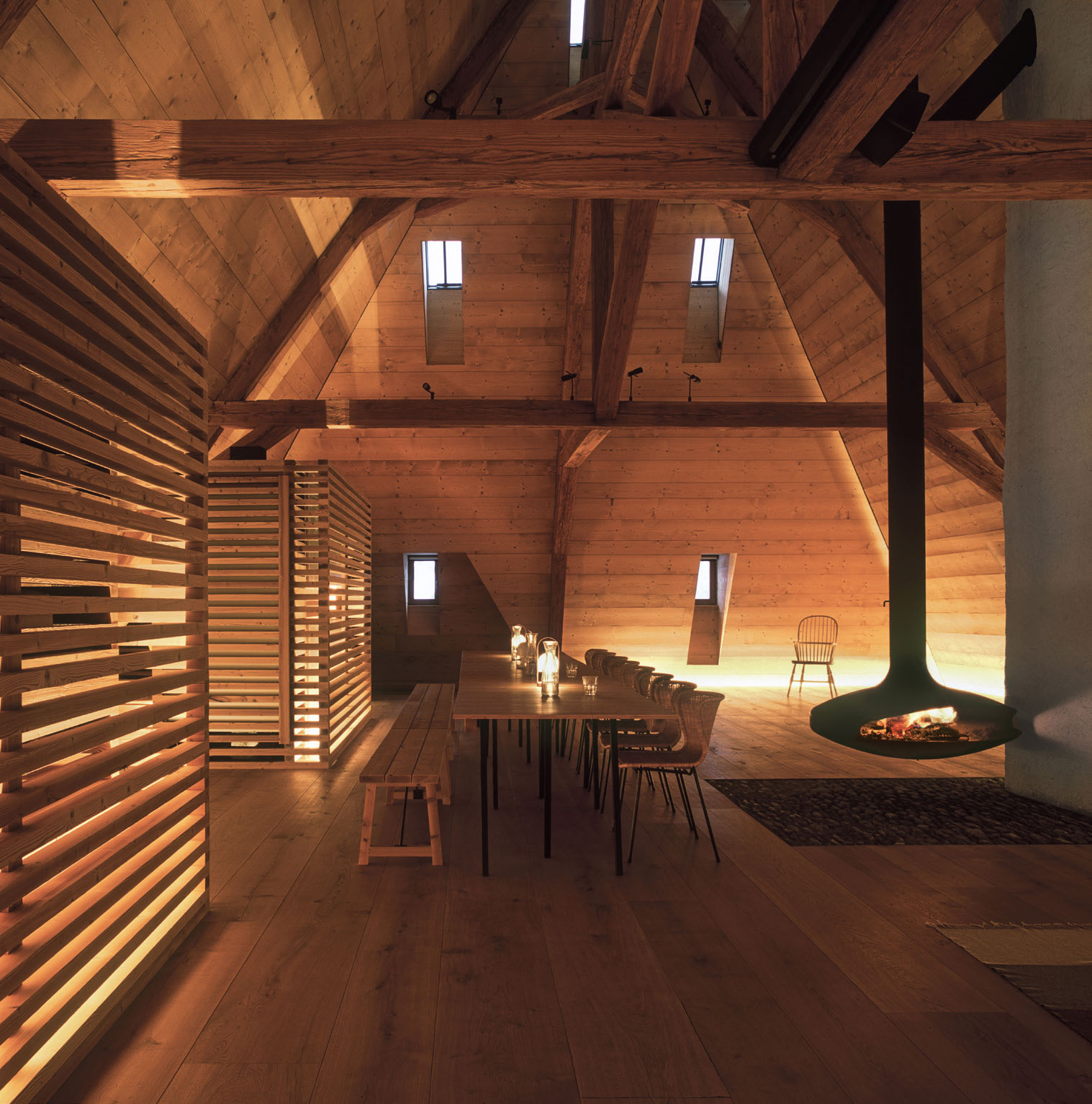
2.3m-tall slatted timber boxes house a kitchen and storage area
Smalley has evoked the daylight that once leaked in through the rafters with a discreet ring of floor level LEDs, while actual natural light comes through the narrow dormers, kept in the same place as the originals and with a few extra slipped in. ‘It has a slightly ecclesiastical atmosphere,’ says Smalley, ‘and it’s maybe even cathedral-like, with that unity you get from a single space. I wanted it to feel a bit rough, not too perfect.’
The studio’s current projects include the overhaul of a modernist house in Ham, south-west London, and work on a Robert Smirke country house. Smalley stresses there’s always a craft element to the practice’s work. The Haute-Savoie attic epitomises this, with the rich quality of the wood, the washes of light, and the texture of the rendered chimney stacks all conjuring up a sense of seclusion and escape, a concealed, self-contained world.
INFORMATION
Receive our daily digest of inspiration, escapism and design stories from around the world direct to your inbox.
Jonathan Bell has written for Wallpaper* magazine since 1999, covering everything from architecture and transport design to books, tech and graphic design. He is now the magazine’s Transport and Technology Editor. Jonathan has written and edited 15 books, including Concept Car Design, 21st Century House, and The New Modern House. He is also the host of Wallpaper’s first podcast.
-
 New tech dedicated to home health, personal wellness and mapping your metrics
New tech dedicated to home health, personal wellness and mapping your metricsWe round up the latest offerings in the smart health scene, from trackers for every conceivable metric from sugar to sleep, through to therapeutic furniture and ultra intelligent toothbrushes
-
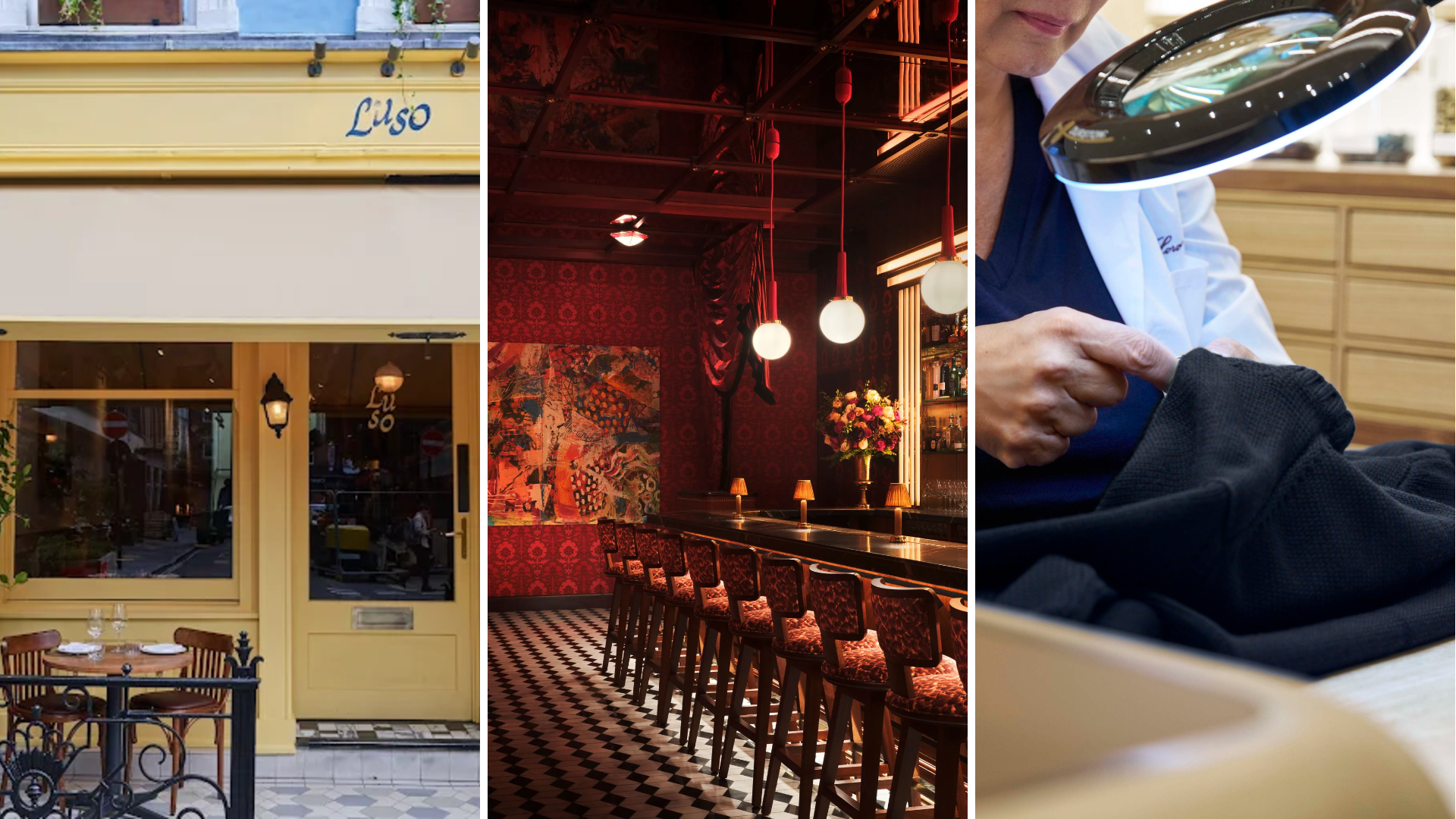 Out of office: The Wallpaper* editors’ picks of the week
Out of office: The Wallpaper* editors’ picks of the week'Tis the season for eating and drinking, and the Wallpaper* team embraced it wholeheartedly this week. Elsewhere: the best spot in Milan for clothing repairs and outdoor swimming in December
-
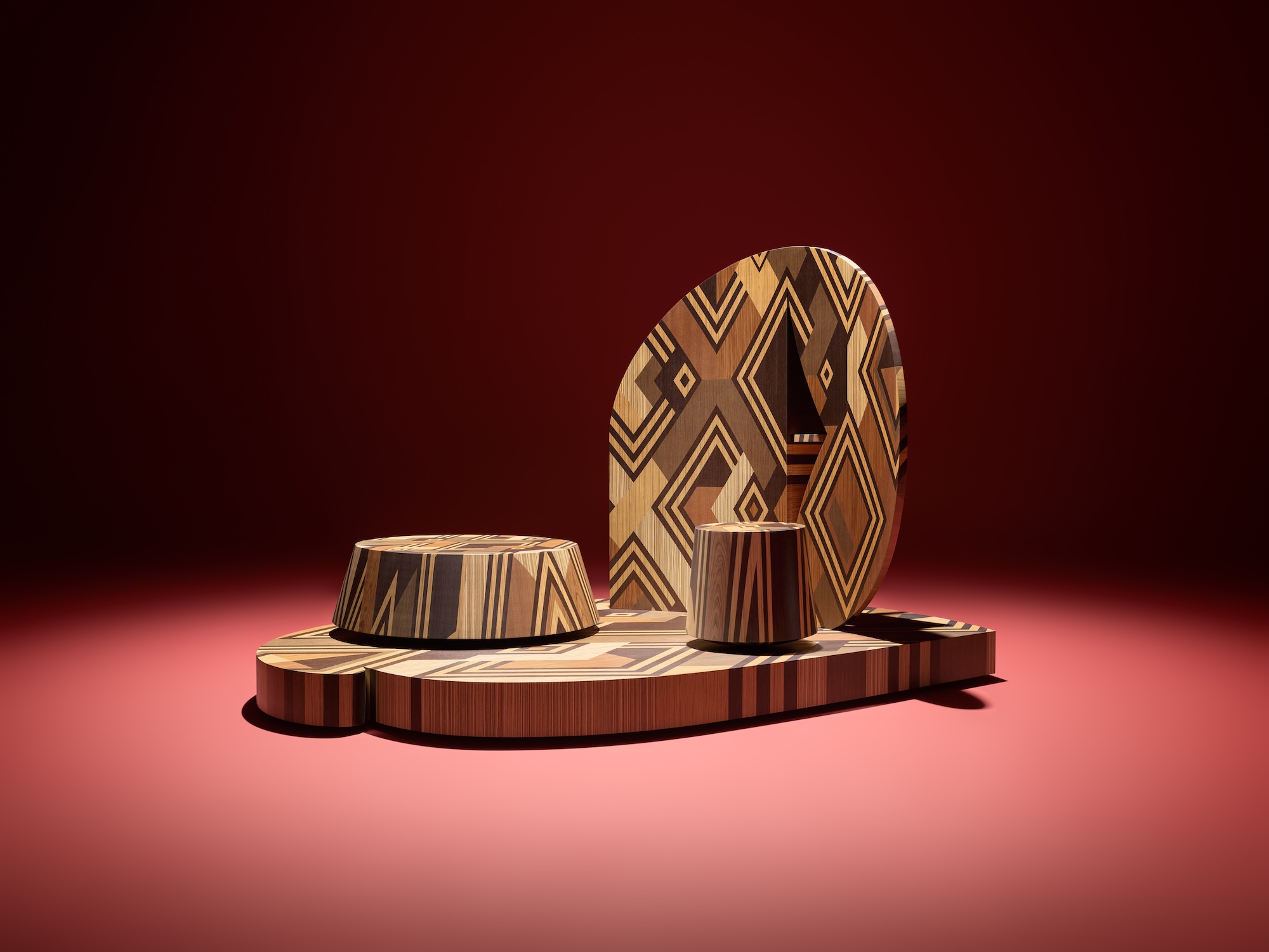 How Stephen Burks Man Made is bringing the story of a centuries-old African textile to an entirely new audience
How Stephen Burks Man Made is bringing the story of a centuries-old African textile to an entirely new audienceAfter researching the time-honoured craft of Kuba cloth, designers Stephen Burks and Malika Leiper have teamed up with Italian company Alpi on a dynamic new product
-
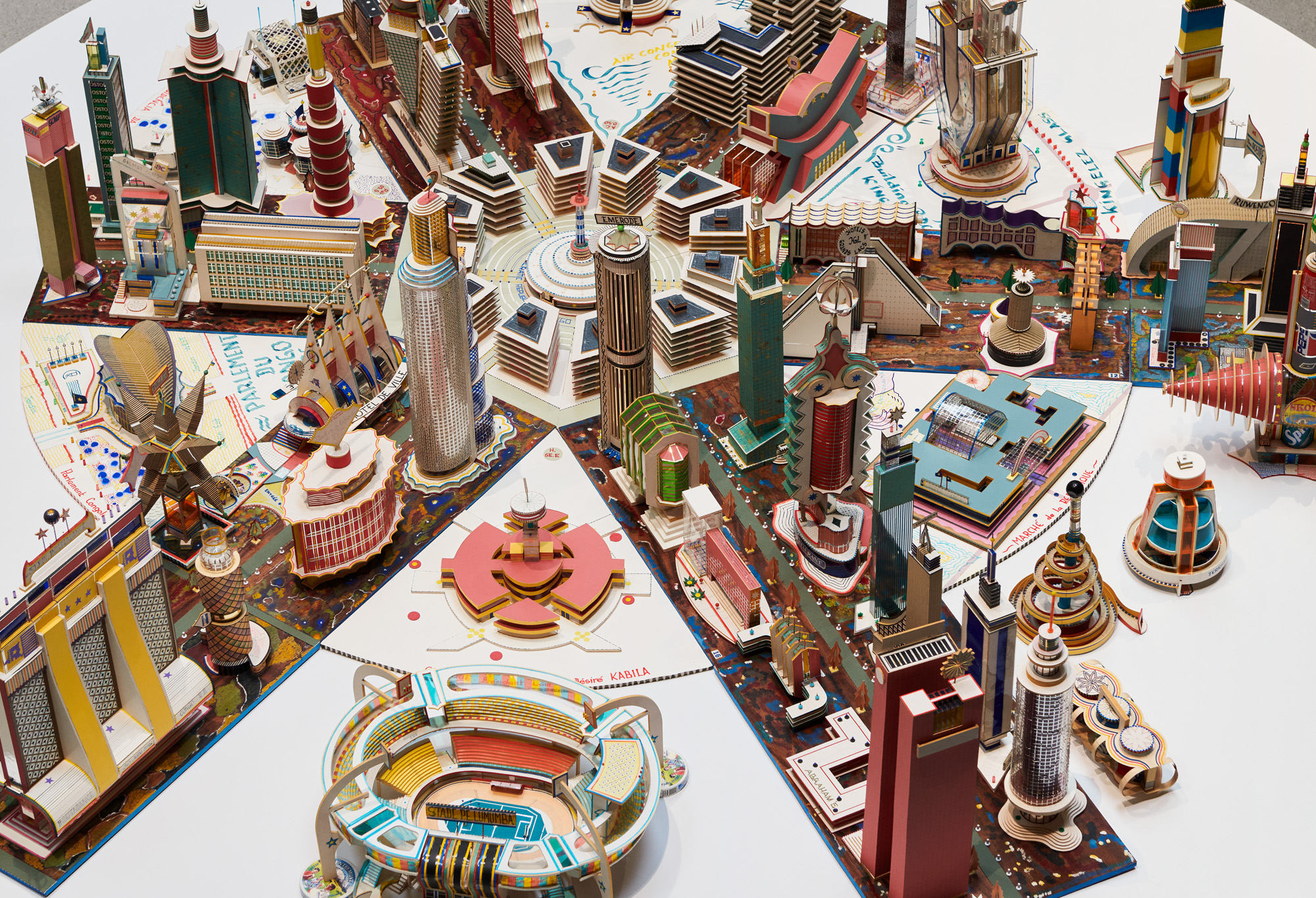 ‘You have to be courageous and experimental’: inside Fondation Cartier’s new home
‘You have to be courageous and experimental’: inside Fondation Cartier’s new homeFondation Cartier pour l'art contemporain in Paris invites us into its new home, a movable feast expertly designed by Jean Nouvel
-
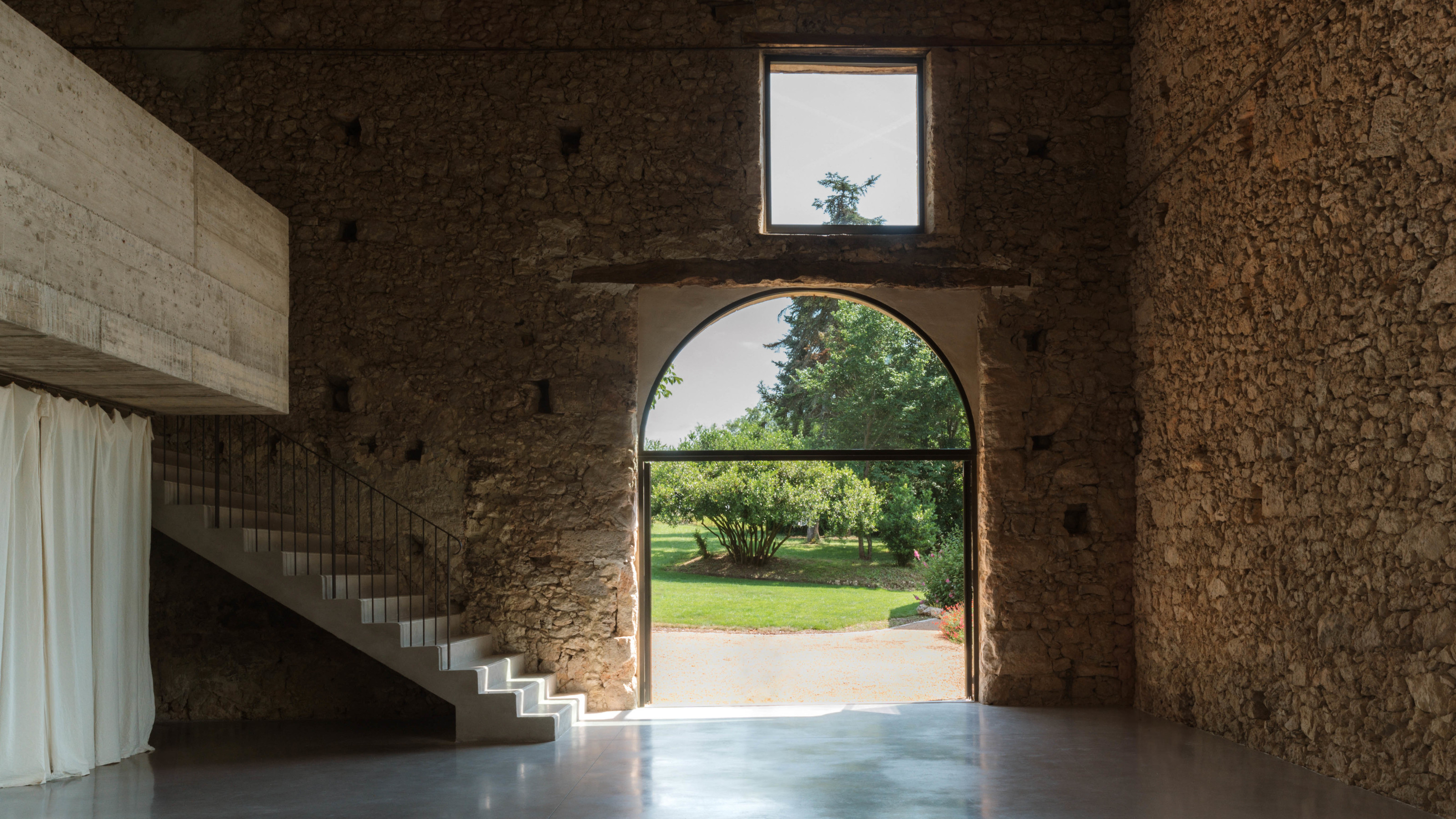 A wellness retreat in south-west France blends rural charm with contemporary concrete
A wellness retreat in south-west France blends rural charm with contemporary concreteBindloss Dawes has completed the Amassa Retreat in Gascony, restoring and upgrading an ancient barn with sensitive modern updates to create a serene yoga studio
-
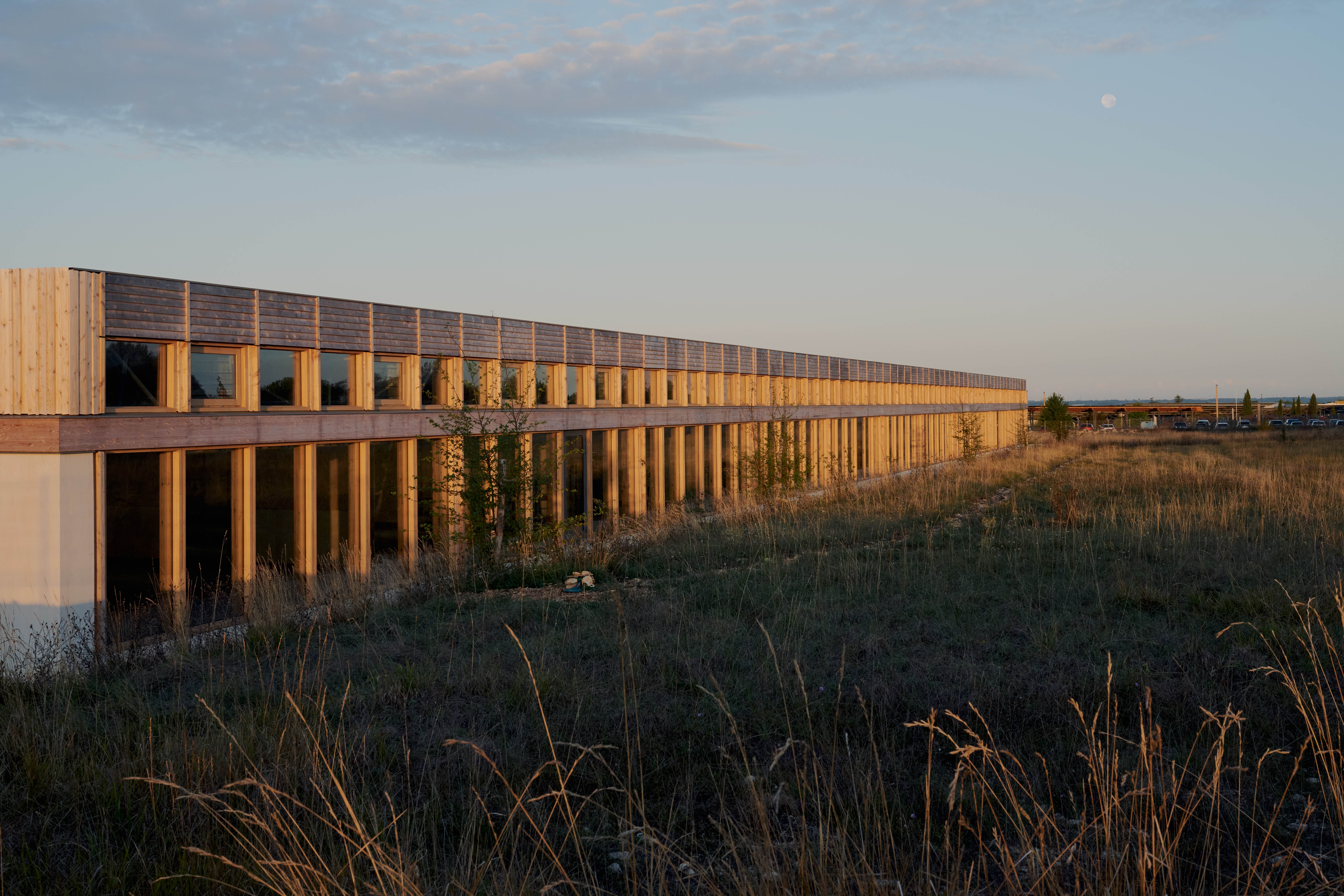 Explore the new Hermès workshop, a building designed for 'things that are not to be rushed'
Explore the new Hermès workshop, a building designed for 'things that are not to be rushed'In France, a new Hermès workshop for leather goods in the hamlet of L'Isle-d'Espagnac was conceived for taking things slow, flying the flag for the brand's craft-based approach
-
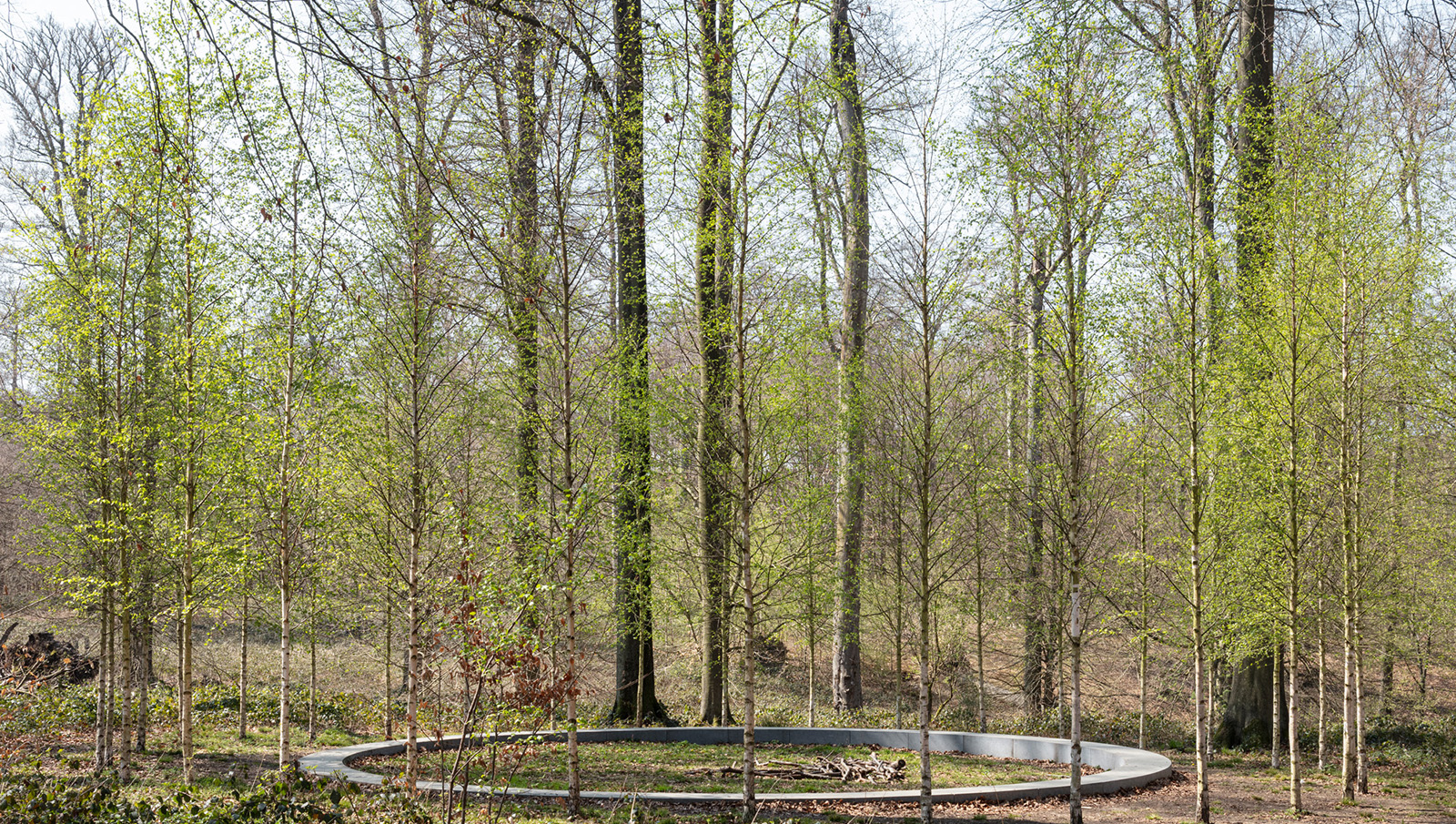 ‘Landscape architecture is the queen of science’: Emanuele Coccia in conversation with Bas Smets
‘Landscape architecture is the queen of science’: Emanuele Coccia in conversation with Bas SmetsItalian philosopher Emanuele Coccia meets Belgian landscape architect Bas Smets to discuss nature, cities and ‘biospheric thinking’
-
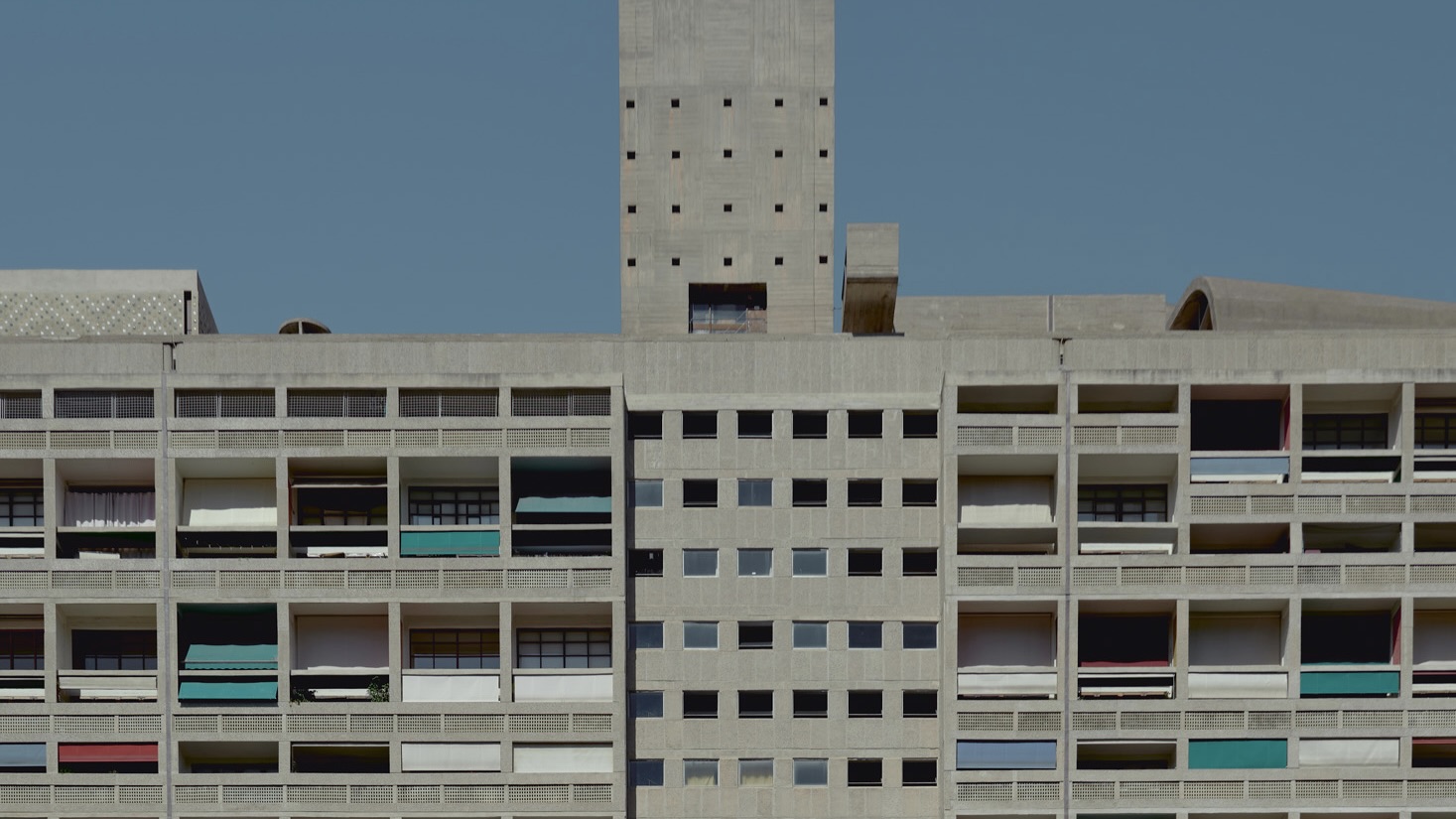 An apartment is for sale within Cité Radieuse, Le Corbusier’s iconic brutalist landmark
An apartment is for sale within Cité Radieuse, Le Corbusier’s iconic brutalist landmarkOnce a radical experiment in urban living, Cité Radieuse remains a beacon of brutalist architecture. Now, a coveted duplex within its walls has come on the market
-
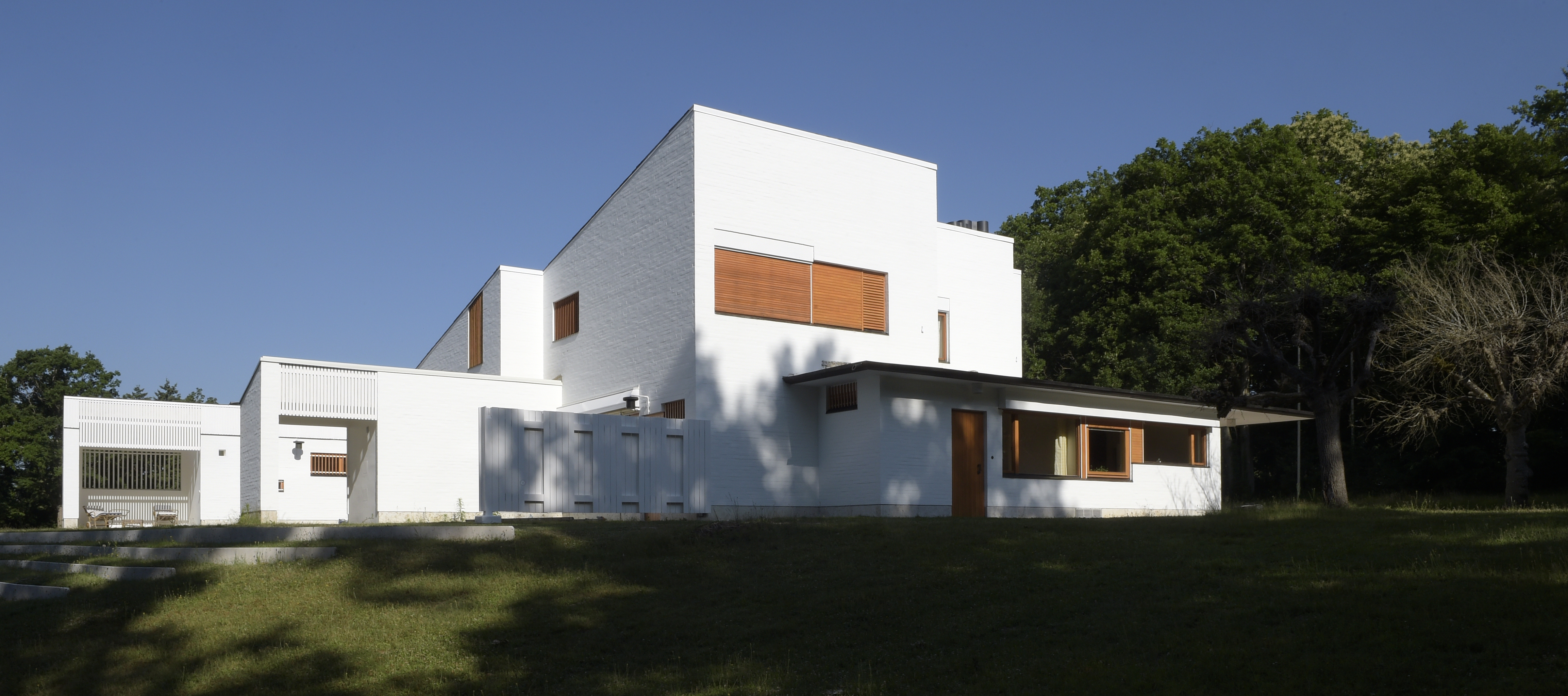 Maison Louis Carré, the only Alvar Aalto house in France, reopens after restoration
Maison Louis Carré, the only Alvar Aalto house in France, reopens after restorationDesigned by the modernist architect in the 1950s as the home of art dealer Louis Carré, the newly restored property is now open to visit again – take our tour
-
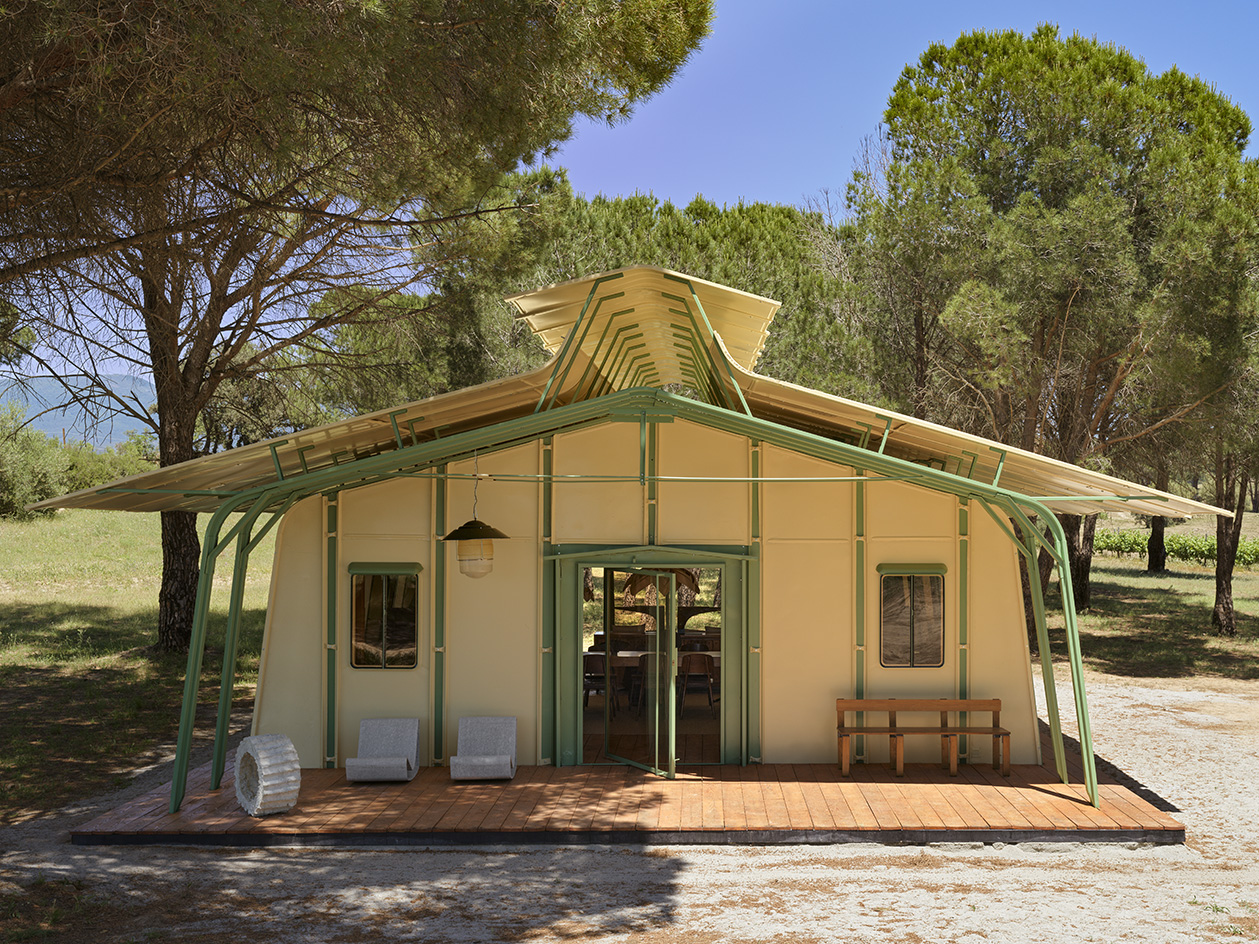 Meet Ferdinand Fillod, a forgotten pioneer of prefabricated architecture
Meet Ferdinand Fillod, a forgotten pioneer of prefabricated architectureHis clever flat-pack structures were 'a little like Ikea before its time.'
-
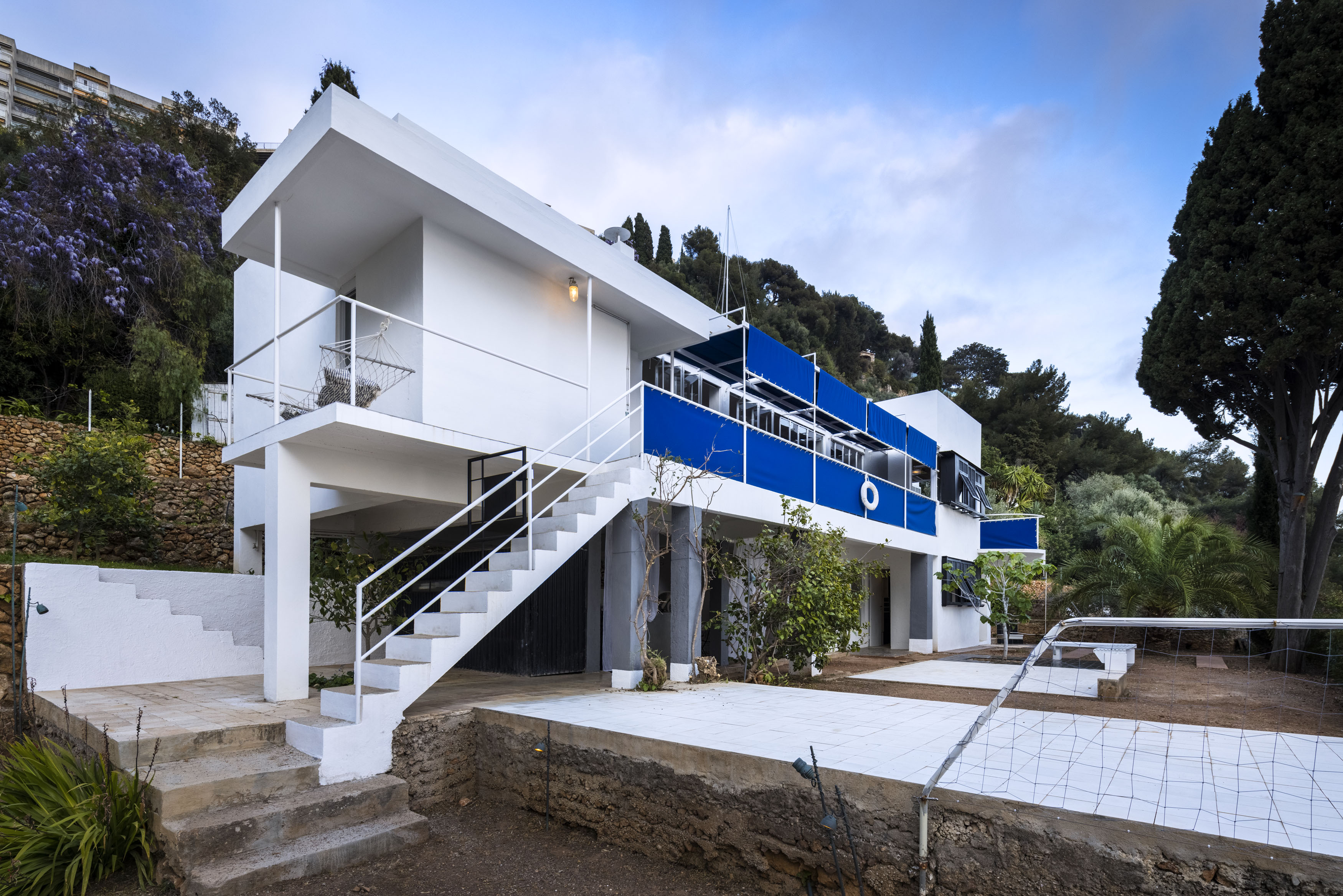 Eileen Gray: A guide to the pioneering modernist’s life and work
Eileen Gray: A guide to the pioneering modernist’s life and workGray forever shaped the course of design and architecture. Here's everything to know about her inspiring career